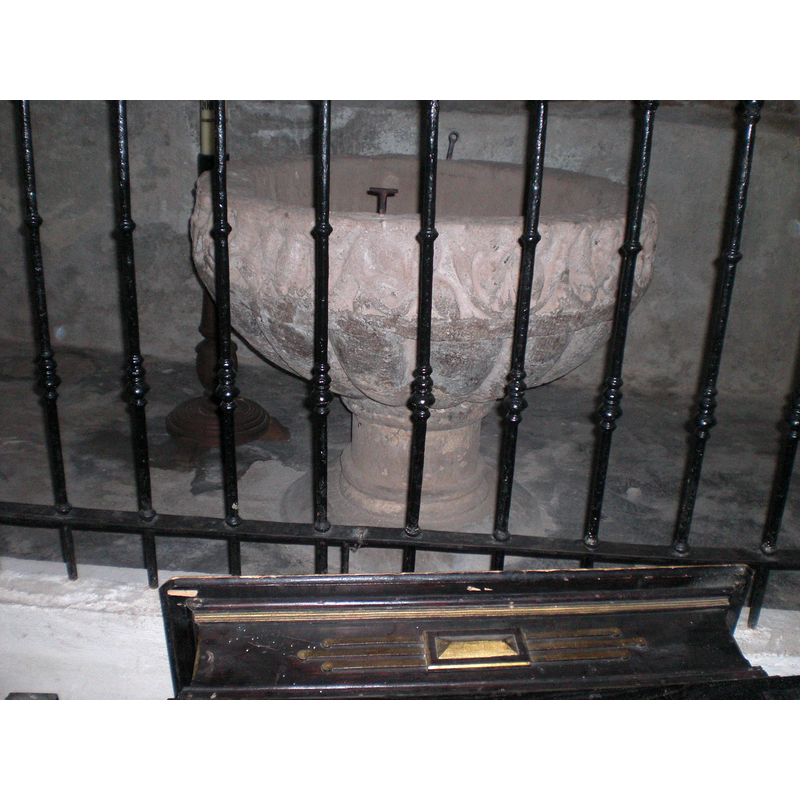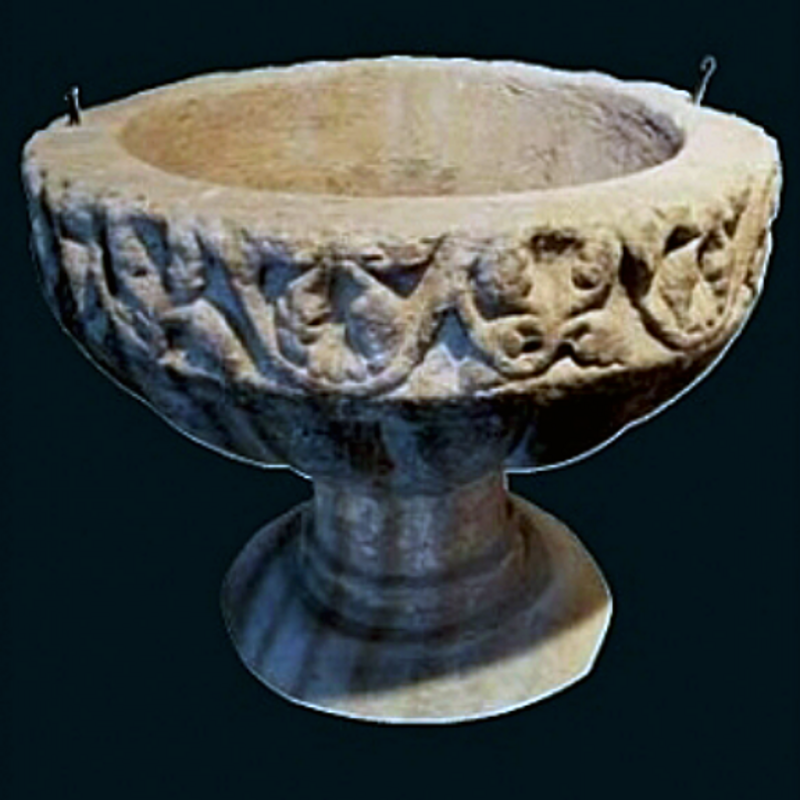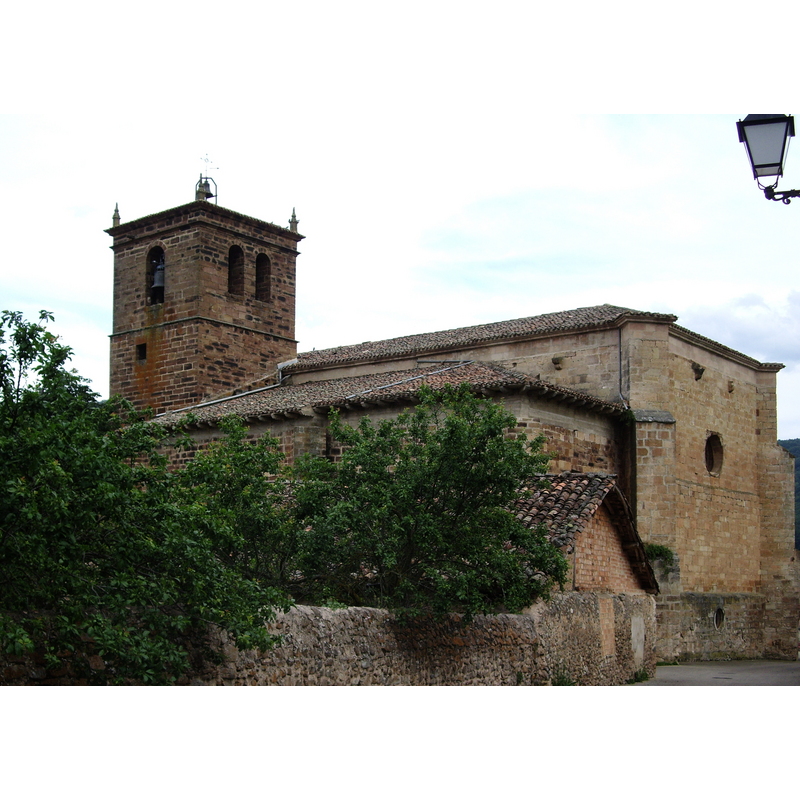Ojacastro / Hojacastrum / Oggacastro / Ogia Castro / Oia Castro / Oiacastro / Ojiacastro / Olia Castro / Oxa Castro / Oxacastro

Image copyright © Mikel Unanue, 2011
Standing permission
Results: 6 records
design element - motifs - moulding
design element - motifs - vine - acanthus
design element - patterns - ribbed
view of church exterior - southeast view
view of font in context
view of font in context
Scene Description: inside the baptismal chapel
Copyright Statement: Image copyright © [in the public domain]
Image Source: digital photography in Rioja Románica [https://www.riojaromanica.com/categorias/pilas-bautismales#] [accessed 18 November 2020]
Copyright Instructions: No known copyright restriction / Fair Dealing
INFORMATION
FontID: 07544OJA
Object Type: Baptismal Font1
Church/Chapel: Iglesia Parroquial de San Julián y Santa Basilisa
Church Patron Saints: St. Julian & St. Basilisa [of Antioque - martyrs - †308]
Church Location: Calle San Pedro, 3, 26270 Ojacastro, La Rioja, Spain -- Tel.: +34 941 35 40 59
Country Name: Spain
Location: La Rioja, La Rioja
Directions to Site: Located off (W) the LR-111, 3-4 km NNE of Ezcaray, in the Valle del Alto Oja
Font Location in Church: Inside the church, in a chapel on the N side
Date: ca. 1190?
Century and Period: 12th century (late?), Romanesque
Workshop/Group/Artisan: Oja-Tirón workshop
Cognate Fonts: several fonts of the same workshop in the area [cf. FontNotes]
Credit and Acknowledgements: We are grateful to Mikel Unanue for his photograph of this font
Font Notes:
Click to view
Described in López de Silanes Valgañón (2000) as a baptismal font probably of the 13th century, of a type not uncommon in the boundary area of Burgos-La Rioja: a hemispherical basin decorated with a vine [acanthus?] around the basin side, and with a ribbed pattern around the underbowl; pedestal base with round splaying lower base, both moulded. This last source (ibid.) gives the fonts at Baños de Rioja, Santasensio los Cantos, Santurde de Rioja, Ezcaray, Valgañón and Anguta [now at Valgañón]. Described in Sáenz Rodríguez (2004) and in the Enciclopedia del románico en La Rioja (2008) as a baptismal font of the Oja-Tirón workshop; these two sources suggest that this font probably had an inscription below the vine motif, like those at Eterna, Fresneda de la Sierra and Grañón, that would have dated to ca. 1190. The upper rim retains two metal staples for the old cover. The relief is very eroded now. Noted and illustrated in Rioja Románica [https://www.riojaromanica.com/categorias/pilas-bautismales#] [accessed 18 November 2020]: "La pila bautismal conservada en esta iglesia es de finales del siglo XII. Sobre una basa y un corto fuste descansa una taza con gallones verticales y un friso con motivos vegetales."
COORDINATES
UTM: 30T 500000 4688638`
MEDIUM AND MEASUREMENTS
Material: stone
Number of Pieces: two?
Font Shape: hemispheric (mounted)
Basin Interior Shape: round
Basin Exterior Shape: round
Drainage Notes: no lining
Diameter (includes rim): 117 cm*
Basin Total Height: 52 cm*
Height of Base: 45 cm*
Font Height (less Plinth): 97 cm*
Notes on Measurements: * [Sáenz Rodríguez (2004)]
INSCRIPTION
Inscription Notes: there may have been originally an inscription on the band below the vine [cf. FontNotes]
LID INFORMATION
Notes: [cf. FontNotes]
REFERENCES
Fundación Santa María la Real, Enciclopedia del románico en la Rioja, Aguilar de Campoo: Fundación Santa María la Real, Centro de Estudios del Románico, 2008
López de Silanes Valgañón, F. J. Ignacio, Rutas románicas en La Rioja, Madrid: Encuentro, 2000
Sáenz Rodríguez, Minerva, "Las pilas bautismales del arte románico en la Rioja", Arte medieval en la Rioja: prerrománico y románico. VIII Jornadas de arte y patrimonio regional, Logroño: Instituto de Estudios Riojanos, 2004

